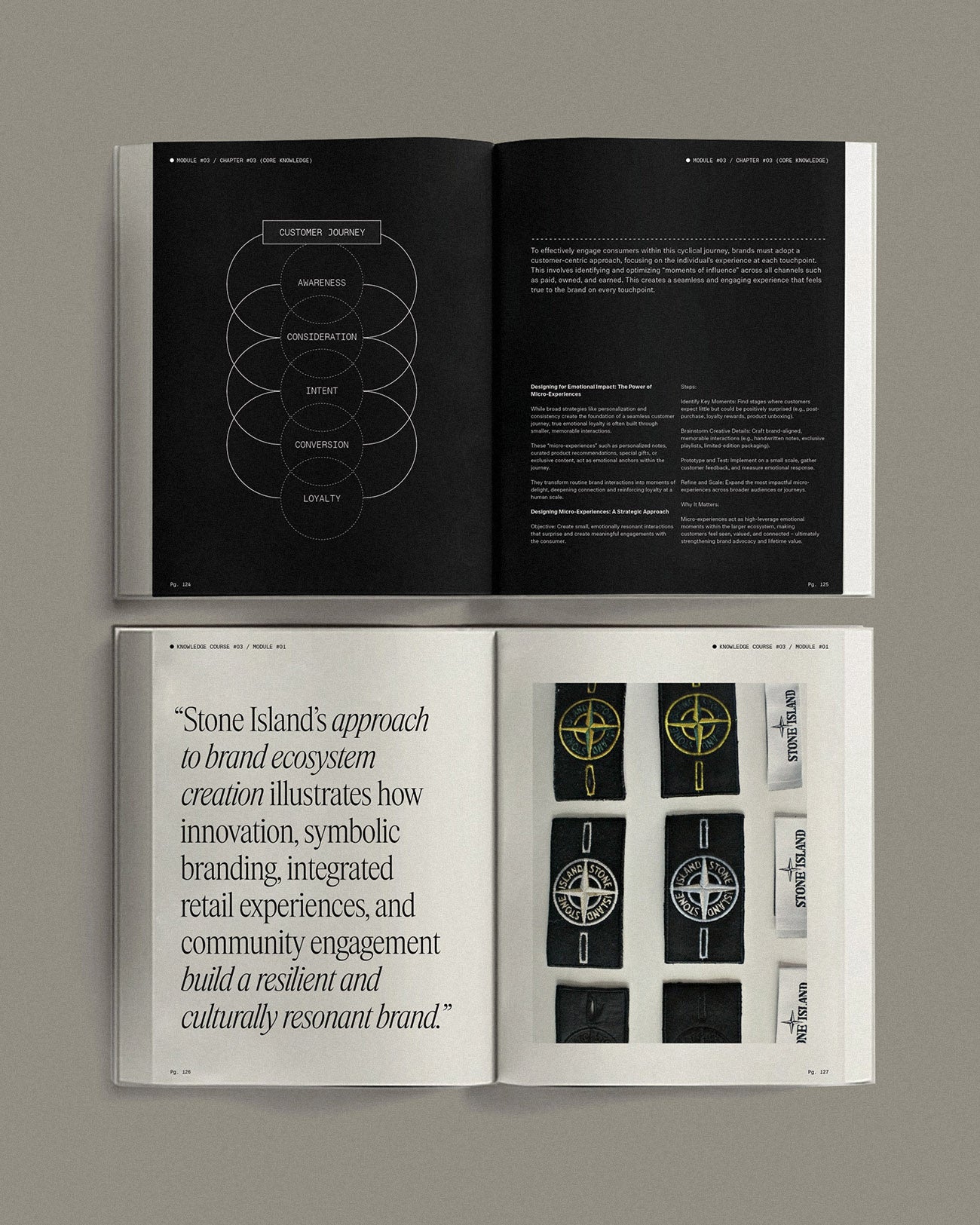Building the Total Brand Ecosystem
This module redefines branding through ecosystem thinking, where every product, platform, space, and story contributes to a unified, evolving brand world. Through case studies of pioneers like Stone Island, Coperni, and Moncler, students will learn to design immersive, multi-touchpoint experiences that balance strategy with creativity. The chapter equips them with practical tools to map, build, and expand brand ecosystems that create powerful, interconnected brand experiences.
Now available exclusively to Founding Members as part of The Fundamentals of Creativity & Brand course.
COURSE MODULES
Have a queston?
Get in touch with us at any time.





























